English National Ballet spins into a new glass box in east London
Glenn Howells Architects has designed the new glass-and-concrete home for the English National Ballet in London City Island, in the UK capital's east, inspired by industrial spaces and warehouses
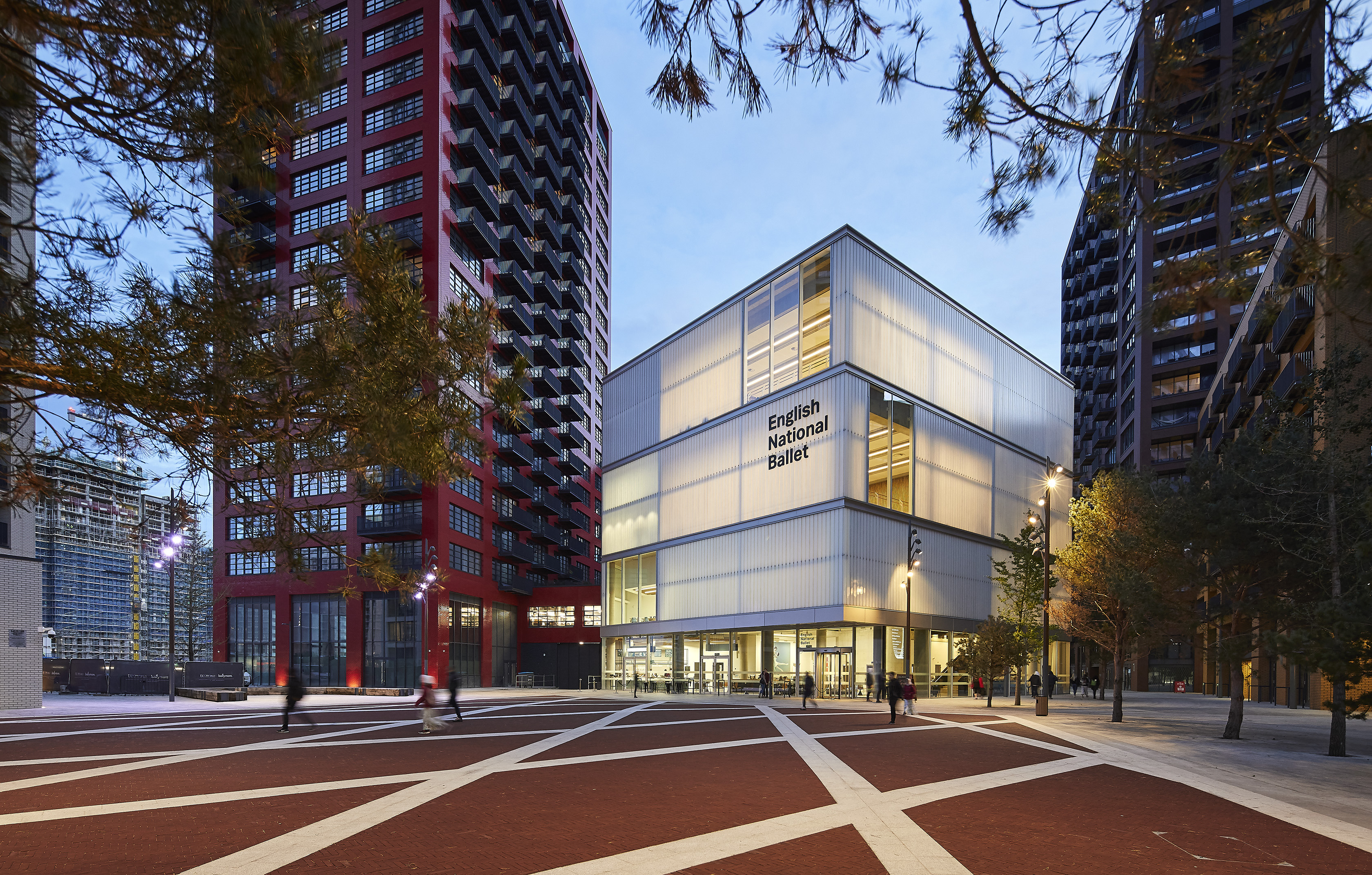
English National Ballet’s 70 dancers and 50 staff have relocated from a Victorian mews in Kensington to a £36m translucent box in east London.
The five-storey, 93,000 sq ft structure is one of a cluster of new blocks by Glenn Howells Architects. Together, they make up Hopewell Square, which sits on London City Island, a peninsula on the Thames reached via Ramboll’s red footbridge from Canning Town station.
GHA director Dan Mulligan says of the interior: ‘We wanted it to have the feel of a converted warehouse – lean, raw and industrialised.' Hence the liberal use of concrete. ‘We love the fact that concrete has tonnes of personality,' he adds. Meanwhile the translucency is achieved with big sheets of extra-white industrialised glass.
On the ground floor is a reception area and café, which is open to the public, and a production studio complete with fly tower and bleacher seating that packs away. Zigzagging up the building is a wide staircase of sheet metal with a timber floor and hand rail, and a strip of lighting running along underside.
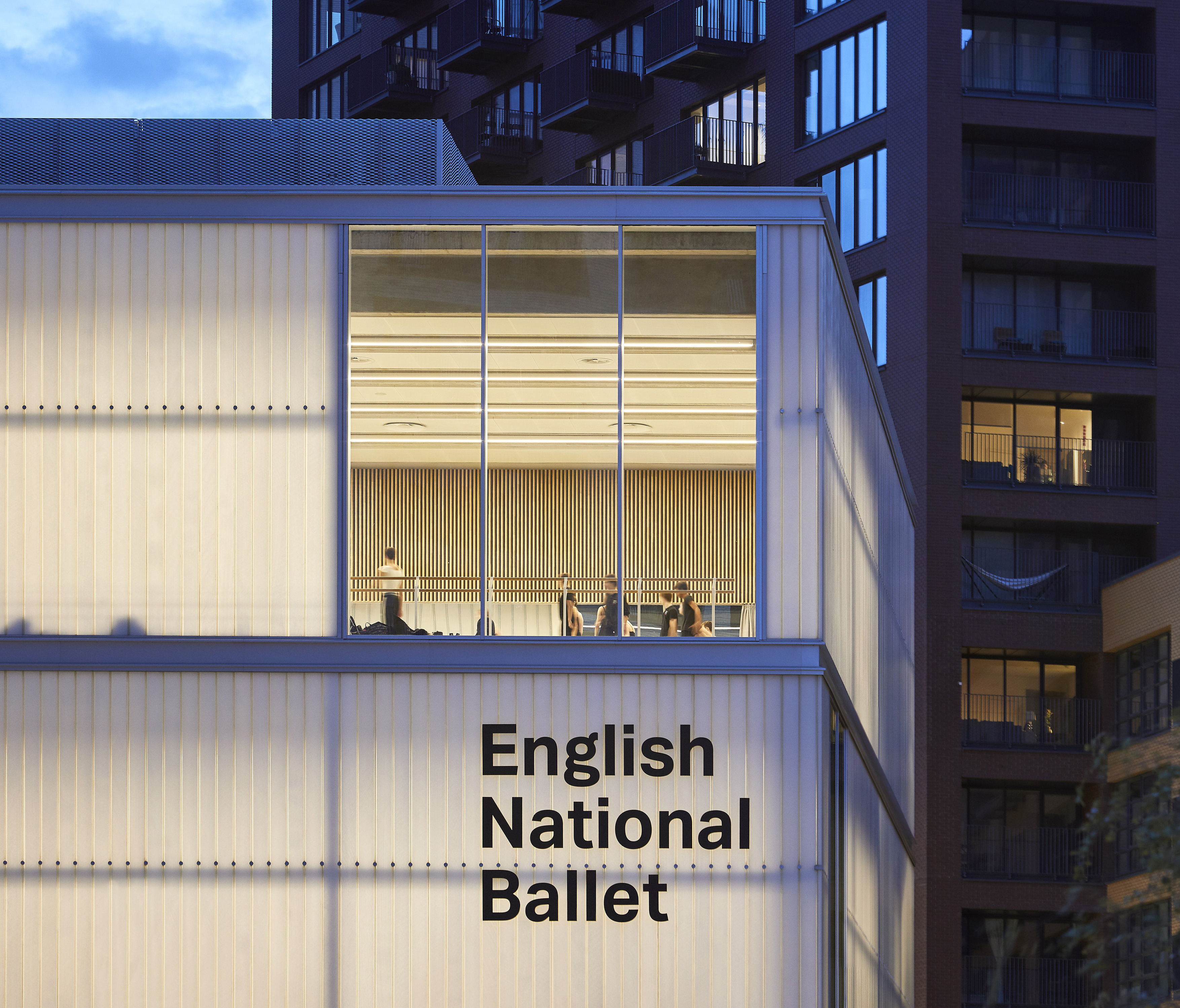
Upstairs houses seven full-sized rehearsal rooms (with ceilings high enough to perform a lift), a room with rush matting on the floor where dancers do their stretching, a gym and costume workshop four times the size of the old one.
In ENB’s previous home, many of these facilities were either not fit for purpose or off-site. That includes the English National Ballet School, which has moved into the top two floors. Some of these spaces can be rented out to bring in extra income.
Mulligan and his team visited dance institutions around the world to glean ideas. Hence the pigeon holes in the studios where dancers can store belongings, and the internal windows which give the building’s users views into rehearsals.
The ENB, which marks its 70th anniversary this year, is not the only arts organisation on the peninsula. It will be joined by Nicholas Hare Architects’ new home for London Film School.

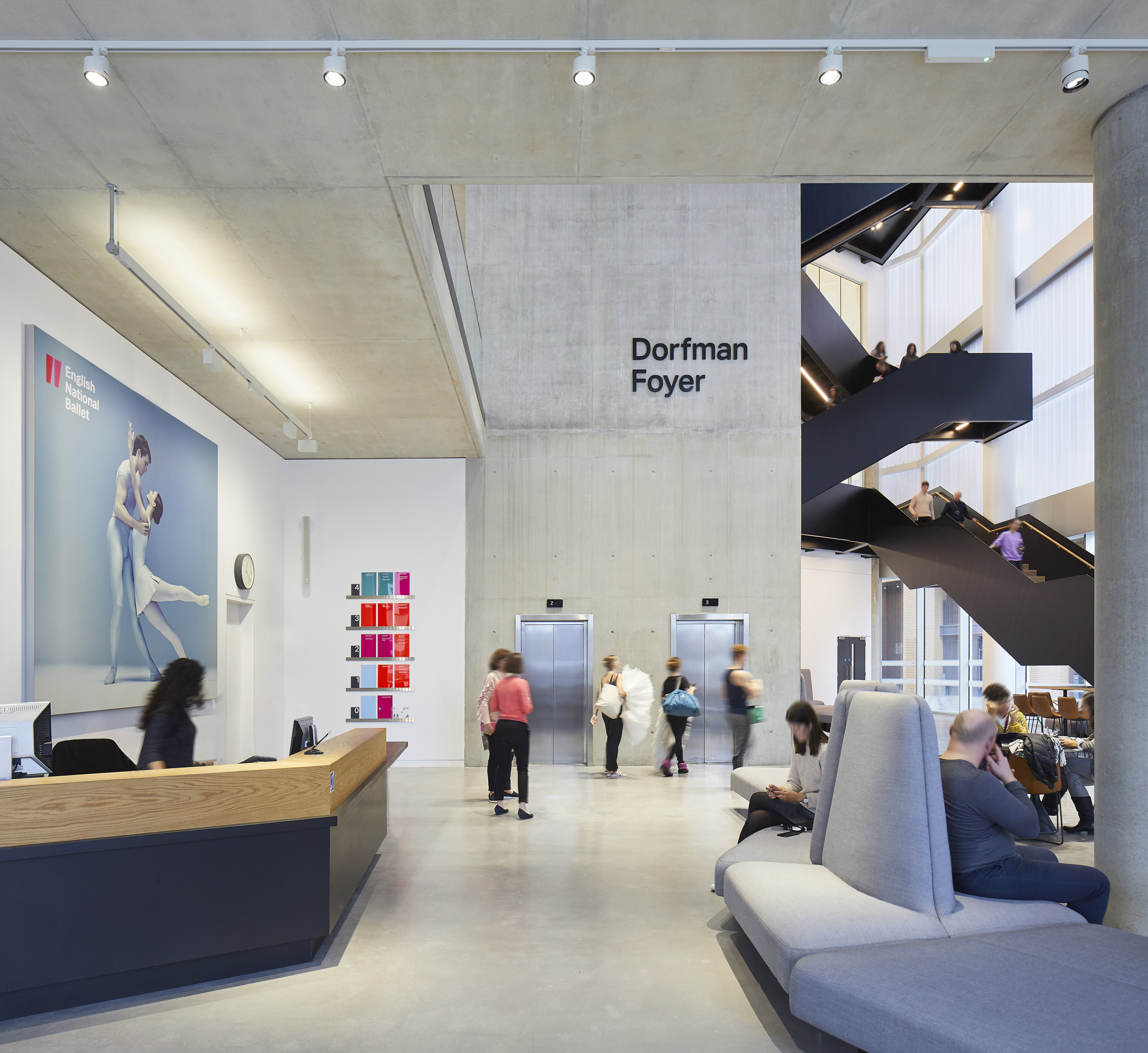
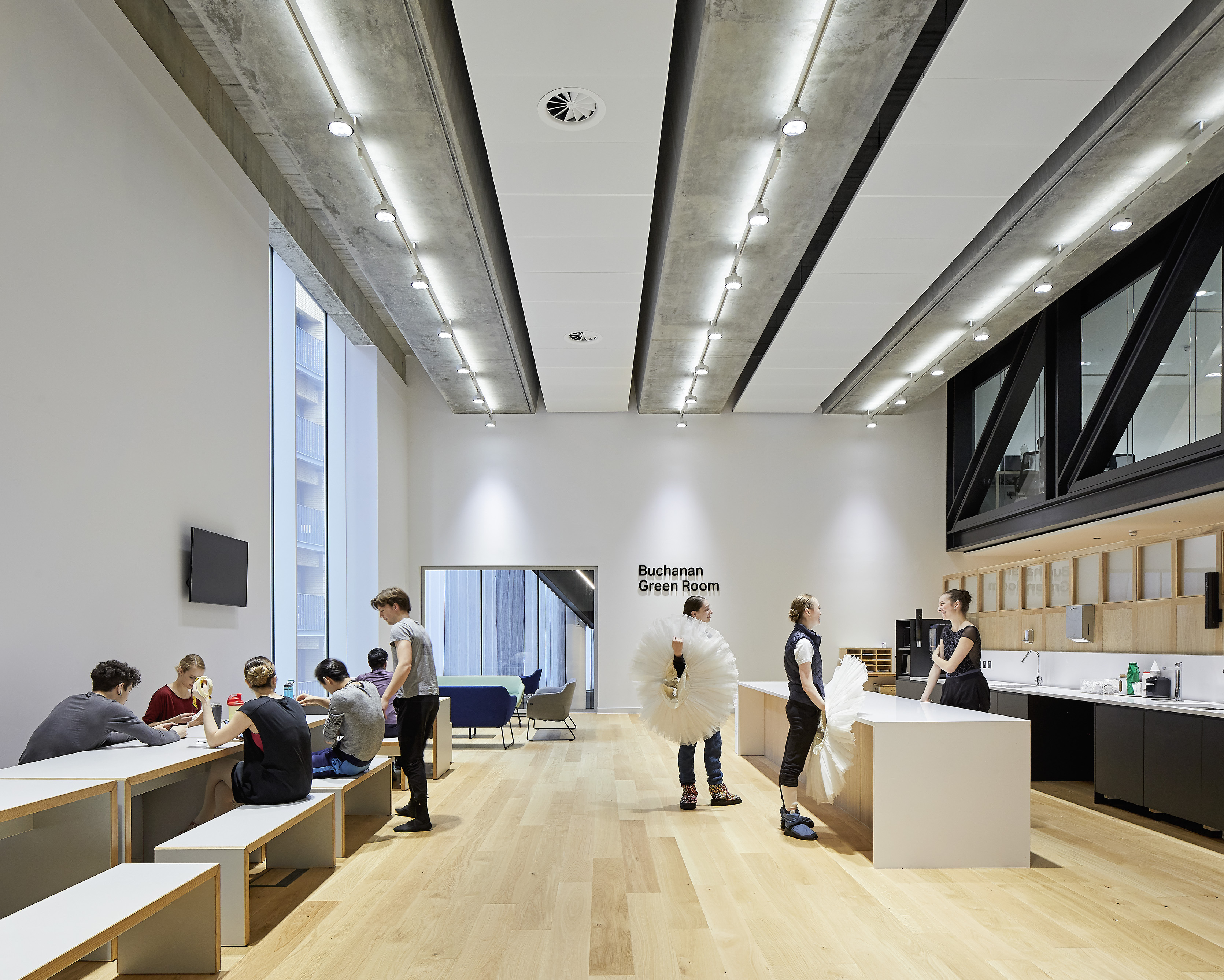



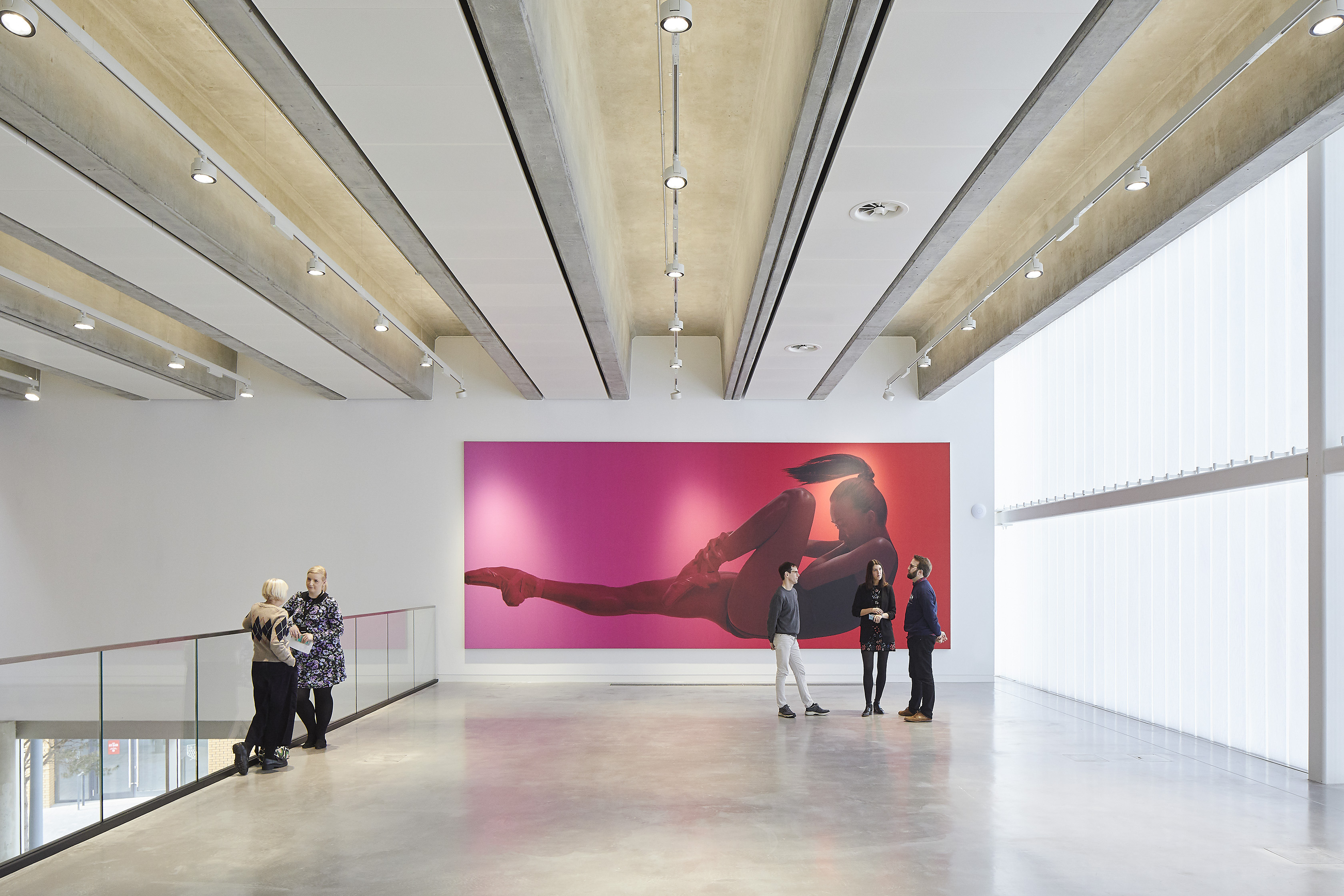
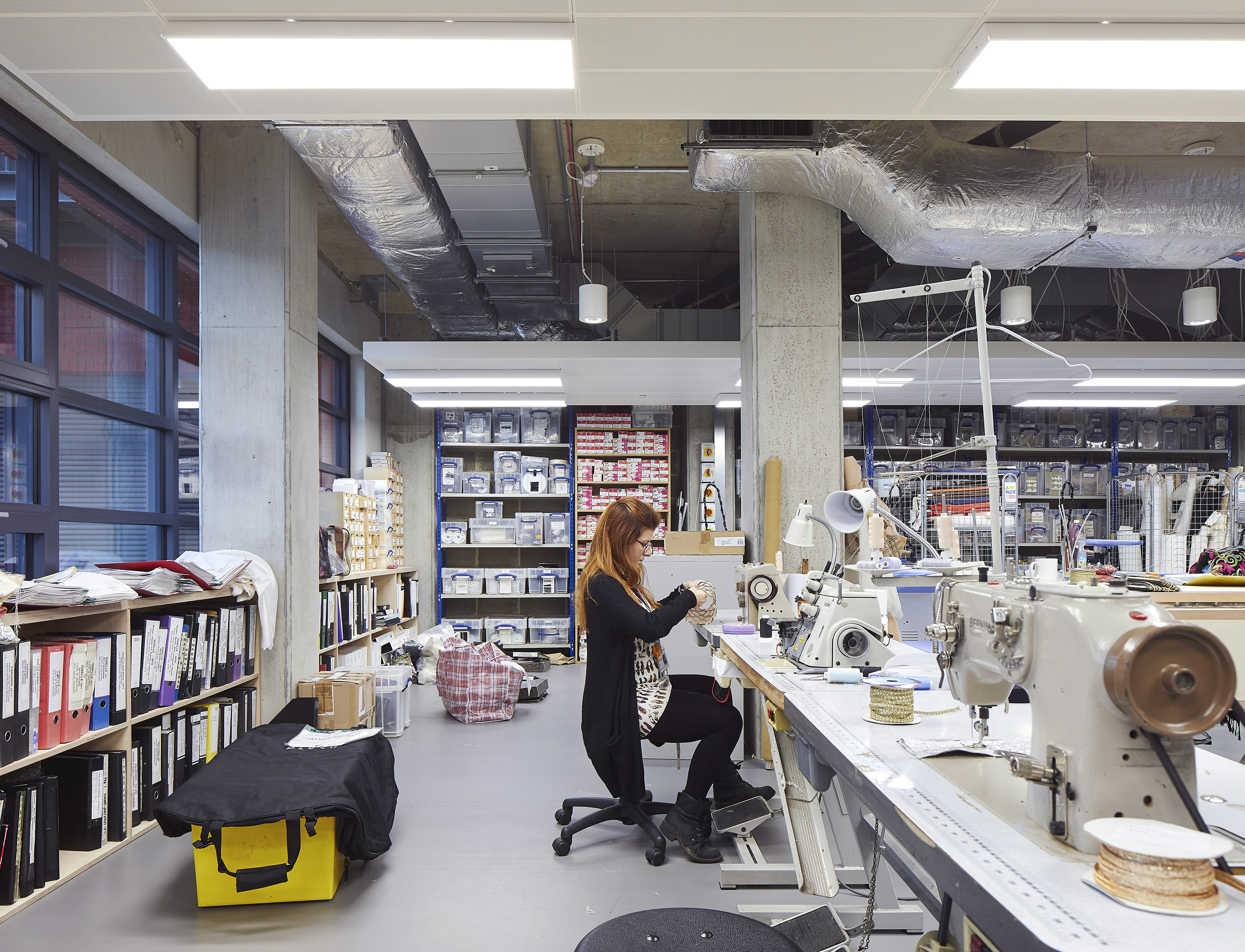
INFORMATION
Receive our daily digest of inspiration, escapism and design stories from around the world direct to your inbox.
Clare Dowdy is a London-based freelance design and architecture journalist who has written for titles including Wallpaper*, BBC, Monocle and the Financial Times. She’s the author of ‘Made In London: From Workshops to Factories’ and co-author of ‘Made in Ibiza: A Journey into the Creative Heart of the White Island’.
-
 New tech dedicated to home health, personal wellness and mapping your metrics
New tech dedicated to home health, personal wellness and mapping your metricsWe round up the latest offerings in the smart health scene, from trackers for every conceivable metric from sugar to sleep, through to therapeutic furniture and ultra intelligent toothbrushes
-
 Out of office: The Wallpaper* editors’ picks of the week
Out of office: The Wallpaper* editors’ picks of the week'Tis the season for eating and drinking, and the Wallpaper* team embraced it wholeheartedly this week. Elsewhere: the best spot in Milan for clothing repairs and outdoor swimming in December
-
 How Stephen Burks Man Made is bringing the story of a centuries-old African textile to an entirely new audience
How Stephen Burks Man Made is bringing the story of a centuries-old African textile to an entirely new audienceAfter researching the time-honoured craft of Kuba cloth, designers Stephen Burks and Malika Leiper have teamed up with Italian company Alpi on a dynamic new product
-
 Arbour House is a north London home that lies low but punches high
Arbour House is a north London home that lies low but punches highArbour House by Andrei Saltykov is a low-lying Crouch End home with a striking roof structure that sets it apart
-
 A former agricultural building is transformed into a minimal rural home by Bindloss Dawes
A former agricultural building is transformed into a minimal rural home by Bindloss DawesZero-carbon design meets adaptive re-use in the Tractor Shed, a stripped-back house in a country village by Somerset architects Bindloss Dawes
-
 RIBA House of the Year 2025 is a ‘rare mixture of sensitivity and boldness’
RIBA House of the Year 2025 is a ‘rare mixture of sensitivity and boldness’Topping the list of seven shortlisted homes, Izat Arundell’s Hebridean self-build – named Caochan na Creige – is announced as the RIBA House of the Year 2025
-
 In addition to brutalist buildings, Alison Smithson designed some of the most creative Christmas cards we've seen
In addition to brutalist buildings, Alison Smithson designed some of the most creative Christmas cards we've seenThe architect’s collection of season’s greetings is on show at the Roca London Gallery, just in time for the holidays
-
 In South Wales, a remote coastal farmhouse flaunts its modern revamp, primed for hosting
In South Wales, a remote coastal farmhouse flaunts its modern revamp, primed for hostingA farmhouse perched on the Gower Peninsula, Delfyd Farm reveals its ground-floor refresh by architecture studio Rural Office, which created a cosy home with breathtaking views
-
 A revived public space in Aberdeen is named Scotland’s building of the year
A revived public space in Aberdeen is named Scotland’s building of the yearAberdeen's Union Terrace Gardens by Stallan-Brand Architecture + Design and LDA Design wins the 2025 Andrew Doolan Best Building in Scotland Award
-
 The Architecture Edit: Wallpaper’s houses of the month
The Architecture Edit: Wallpaper’s houses of the monthFrom wineries-turned-music studios to fire-resistant holiday homes, these are the properties that have most impressed the Wallpaper* editors this month
-
 A refreshed 1950s apartment in East London allows for moments of discovery
A refreshed 1950s apartment in East London allows for moments of discoveryWith this 1950s apartment redesign, London-based architects Studio Naama wanted to create a residence which reflects the fun and individual nature of the clients